 To enhance service speed and avoid tariff delays, we've opened a US warehouse. All US orders ship directly from our US facility.
To enhance service speed and avoid tariff delays, we've opened a US warehouse. All US orders ship directly from our US facility.
| Cat. No. | Product Name | Field of Application | Chemical Structure |
|---|---|---|---|
| A731 | GFB-024 Biosimilar(Anti-CB1 / CNR1 Reference Antibody) Featured |

|
|
| A730 | Nimacimab Biosimilar(Anti-CB1 / CNR1 Reference Antibody) Featured |

|
|
| A729 | Toray patent anti-Caprin-1 Biosimilar(Anti-CAPRIN1 Reference Antibody) Featured |

|
|
| A728 | Erenumab Biosimilar(Anti-CALCRL / CGRPR Reference Antibody) Featured |
Erenumab is a fully human monoclonal antibody. Erenumab inhibits the calcitonin gene–related peptide (CGRP) receptor. Erenumab can be used for the prevention of episodic migraine.
More description
|
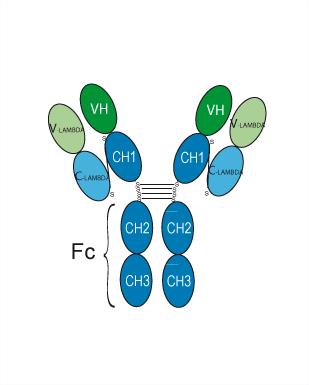
|
| A727 | Fremanezumab Biosimilar(Anti-CALCA / CGRP Reference Antibody) Featured |
Fremanezumab (TEV-48125) is a humanized IgG2a monoclonal antibody that selectively and potently binds to calcitonin gene-related peptide (CGRP). CGRP is a 37-amino acid neuropeptide involved in central and peripheral pathophysiological events of migraine. Fremanezumab has the potential for chronic migraine research.
More description
|
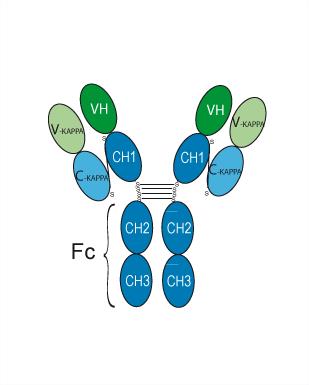
|
| A726 | Galcanezumab Biosimilar(Anti-CALCA / CGRP Reference Antibody) Featured |
Galcanezumab (LY 2951742) is a humanized IgG4 monoclonal antibody against the CGRP ligand. Galcanezumab can be used for migraine or cluster headaches research.
More description
|
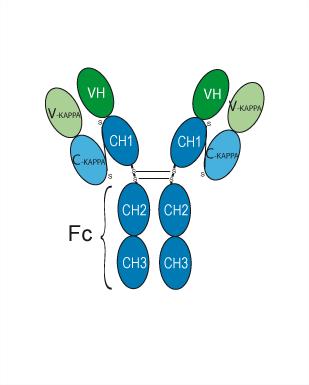
|
| DC74393 | BI-8128 Featured |
BI-8128 is a potent, selective, reversible and orally bioavailable fourth generation EGFR inhibitor, potently inhibits oncogenic EGFR variants del19 and L858R as well as the acquired EGFR resistance mutations T790M and C797S.
More description
|

|
| DC12145 | DLinDMA Featured |
DLin-DMA is an ionizable amino lipid with cationic properties and a pKa of 6.7. It is widely utilized in lipid nanoparticle (LNP) formulations alongside helper lipids to enable efficient nucleic acid delivery.
More description
|
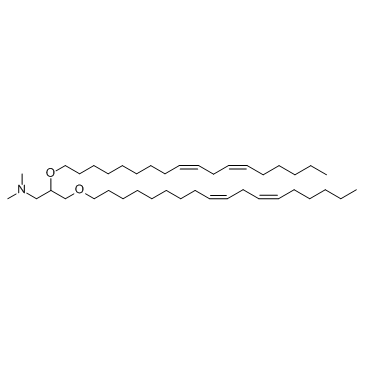
|
| DC37810 | Phenylacetylglutamine Featured |
Phenylacetylglutamine is used as biomarker for metabolic age.
More description
|

|
| DC67510 | Fluorocholine chloride Featured |
Fluorocholine chloride serves as a versatile biochemical tool for life science investigations, functioning both as an organic compound and biological marker in various research applications.
More description
|
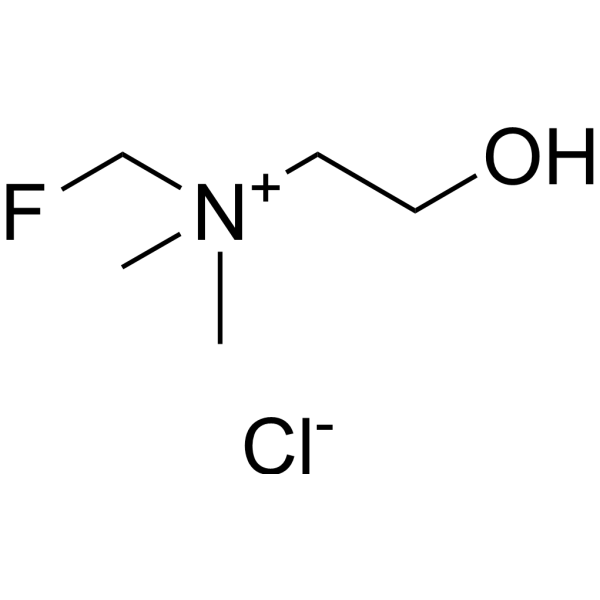
|
| DC60836 | Frutinone A Featured |
Frutinone A, a bioactive flavanone isolated from Rhus species, exhibits significant cytotoxic, antimicrobial, and anti-inflammatory properties. Studies have shown that Frutinone A inhibits cancer cell proliferation with IC₅₀ values in the low micromolar range (e.g., ~5-10 µM in certain cancer cell lines). It also demonstrates antibacterial activity against Gram-positive bacteria like Staphylococcus aureus with MIC values around 10-25 µg/mL. Additionally, Frutinone A exerts anti-inflammatory effects by inhibiting nitric oxide (NO) production in LPS-stimulated macrophages with an IC₅₀ of approximately 15-20 µM. These bioactivities make it a potential lead compound for further pharmaceutical development.
More description
|

|
| DC60835 | CIB-L43 Featured |
CIB-L43 is a TRBP inhibitor. CIB-L43 exhibits a nanomolar inhibitory activity with an EC₅₀ of 0.66 nM and a dissociation constant (K_D) of 4.78 nM, indicating strong binding affinity to TRBP. CIB-L43 effectively disrupts the TRBP-Dicer interaction, with an IC₅₀ of 2.34 μM, leading to suppression of oncogenic miR-21 biosynthesis. This suppression results in increased expression of PTEN and Smad7, thereby inhibiting AKT and TGF-β signaling pathways, which are essential for hepatocellular carcinoma (HCC) cell proliferation and migration. In vivo studies demonstrate that CIB-L43 has favorable pharmacokinetics, including 53.9% oral bioavailability, and exhibits antitumor efficacy comparable to sorafenib, a first-line anticancer drug, but with lower toxicity. These findings position CIB-L43 as a promising candidate for HCC treatment, combining potent TRBP inhibition with favorable drug-like properties.
More description
|

|
| DC48753 | DC-LC3in-D5 Featured |
DC-LC3in-D5 acts as an autophagy inhibitor by attenuating LC3B lipidation. DC-LC3in-D5 binds with LC3B. DC-LC3in-D5 disrupts the LC3B-LBP2 interaction with an IC50 of 200 nM. DC-LC3in-D5 may contribute to anti-HCV or combination treatments in cancer through inhibiting autophagy.
More description
|

|
| DC60834 | LXG6403 Featured |
LXG6403 is a potent, irreversible lysyl oxidase (LOX) inhibitor with an IC₅₀ of 1.3 μM in MDA-MB-231 cells, demonstrating approximately 3.5-fold selectivity over LOXL2 and no activity against LOXL1. It effectively inhibits LOX activity across multiple triple-negative breast cancer (TNBC) cell lines, including HCC143, Hs-578-T, and HCC1937, with IC₅₀ values below 5 μM. In preclinical models, LXG6403 enhances chemosensitivity to agents such as doxorubicin, cisplatin, and paclitaxel by disrupting collagen crosslinking, thereby reducing tumor stiffness, improving drug penetration, inhibiting FAK signaling, and inducing ROS-mediated DNA damage leading to G1 arrest and apoptosis. Notably, in the TM01278 TNBC patient-derived xenograft model, LXG6403 overcame doxorubicin resistance without significant toxicity, underscoring its potential as a therapeutic agent in LOX-driven, chemoresistant cancers
More description
|

|
| DC60833 | Rtioxa-43 Featured |
RTIOXA-43 is a dual orexin receptor agonist exhibiting potent activity at both OX1 and OX2 receptors, with EC₅₀ values of 24 nM for each . In vivo studies involving 12-month-old mice have demonstrated that peripheral administration of RTIOXA-43 significantly increases wakefulness, reduces total sleep time, and enhances sleep/wake consolidation by decreasing the number of sleep episodes and extending their duration . These findings suggest that RTIOXA-43 holds promise as a therapeutic candidate for treating orexin-deficient conditions such as narcolepsy.
More description
|

|
| DC22090 | ER-464195-01 Featured |
ER-464195-01 is a specific, orally active inhibitor that inhibits Calreticulin (CRT) binding to integrin α subunits (ITGAs) with IC50 of 0.17, 0.36, and 0.23 uM in the interaction between CRT and ITGA α4, αL, and αM/α2/α5.
More description
|

|
| DC60832 | GJG057 Featured |
GJG057 is a LTC4S inhibitor. GJG057 exhibits potent cytotoxic effects against various human cancer cell lines, including SGC-7901, HGC-27, and MCF-7, with IC₅₀ values of 20.5 ± 5.93 μM, 3.3 ± 2.53 μM, and 16.6 ± 0.75 μM, respectively. Notably, GJG057 shows high selectivity towards cancer cells over normal cells. Mechanistic investigations revealed that GJG057 induces apoptosis in a concentration-dependent manner and downregulates the expression of HIF-1α, VEGF, and PKM2, leading to decreased lactate production. Furthermore, GJG057 effectively inhibits tubulin assembly, suggesting its potential as a multi-target anti-tumor agent.
More description
|
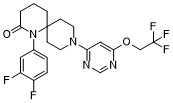
|
| DC73897 | AGF347 Featured |
AGF347 (AGF-347) is a small molecule inhibitor targeting mitochondrial C1 metabolism at SHMT2 (in vitro Ki=2.19 uM), also directly targers the purine biosynthetic enzymes GARFTase (Ki=3.13 uM) and AICARFTase (Ki=3.72 uM), and SHMT1 (Ki=2.91 uM).
More description
|

|
| DCC0193 | 2-furoyl-ligrlo-amide Featured |
2-Furoyl-LIGRLO-amide is a potent and selective proteinase-activated receptor 2 (PAR2) agonist with a pD2 value of 7.0.
More description
|

|
| DC23017 | R 59022 Featured |
A small molecule inhibitor of diacylglycerol kinase (DGK) with IC50 of 2.8 uM, inhibits the phosphorylation of OAG to OAPA with IC50 of 3.8 uM in intact platelets.
More description
|

|
| DC60831 | VLS-1272 Featured |
VLS-1272 is an orally bioavailable, potent, ATP non-competitive, microtubule-dependent, and highly selective inhibitor of KIF18A. VLS-1272 is selective for KIF18A over other kinesins, with no inhibition of KIF11/Eg5, KIF18B, or KIFC1 at 100 µM, and IC50 of 280 nM against KIF19. VLS-1272 treatment results in mitotic defects leading to substantial, dose-dependent inhibition of tumor growth.
More description
|
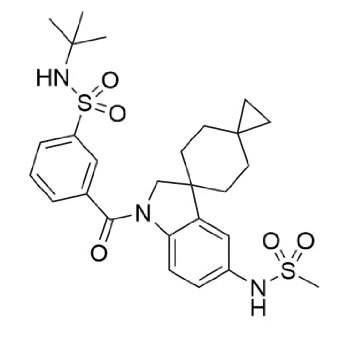
|
| DC60830 | HM-279 Featured |
HM-279 is a potent ALK5 inhibitor with IC50 of 4.7 nM. HM-279 shows cross-reactivity with ALK7 (IC50 of 6.8 nM), but HM-279 has fair to good selectivity against other TGF-β receptor family kinases, with 4.5-693 fold selectivity.
More description
|
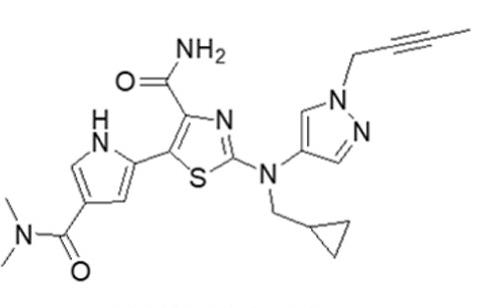
|
| DC60829 | DGEM3 Featured |
dGEM3 is a novel VHL molecular glue that targets the survival of motor neuron (SMN) complex member GEMIN3 for degradation. dGEM3 demonstrated a remarkable degree of selectivity for GEMIN3 recruitment directly out of the DEL screen with no other DEAD-box helicases showing any indication of recruitment or degradation.
More description
|
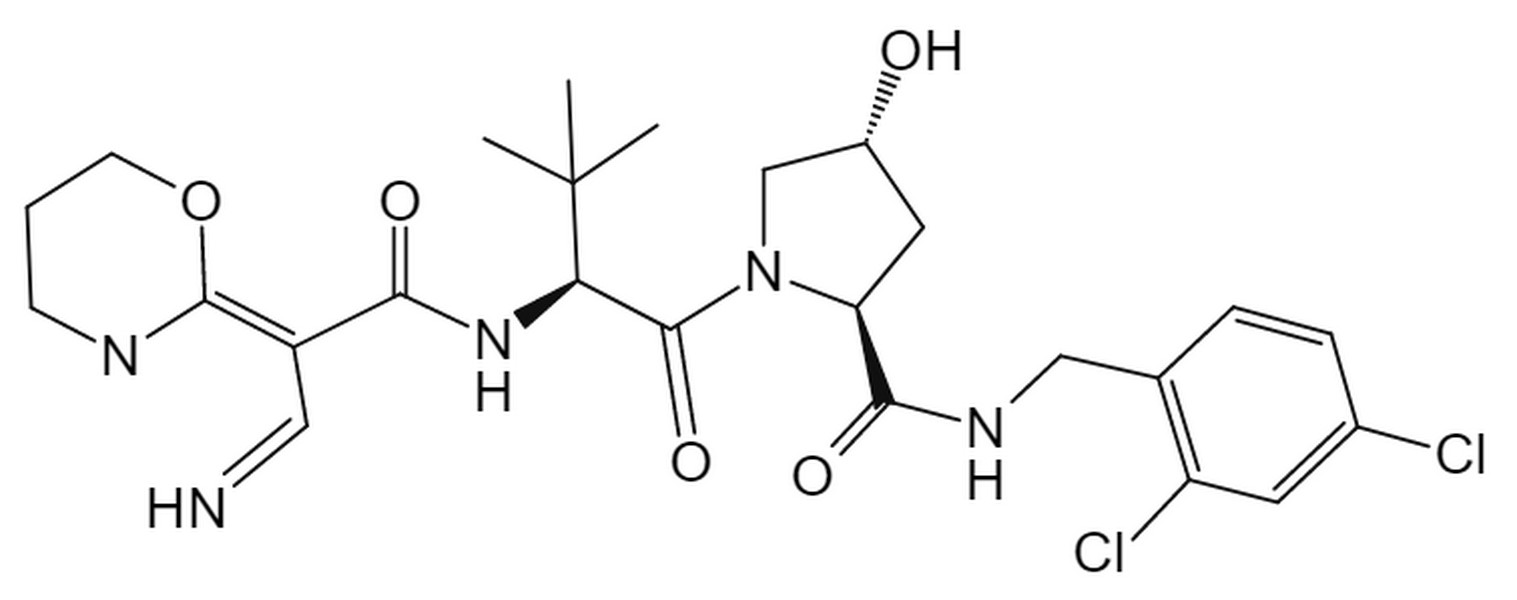
|
| DC60462 | MIC1 Featured |
MIC1 is a set of multi-charged lipids with four tertiary amino nitrogen atoms (4N4T) which could be constructed and applied to form novel lipid nanoparticles. 4N4T-LNPs based on MIC1 exhibit much higher mRNA translation efficiency than the approved SM-102-LNPs. 4N4T-LNPs are successfully applied to DS mRNA vaccine and the vaccines worked well against SARS-CoV-2 and its variants, including Delta and Omicron.
More description
|

|
| DC66649 | CP-LC-1254 Featured |
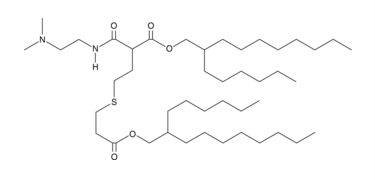
|
|
| DC21219 | LBL1 Featured |
LBL1 is a first-in-class pyrroloquinazoline small molecule that selectively targets the coiled-coil domain of lamin A (binding affinity Kd = 5.11 μM), demonstrating potent anticancer effects through nuclear lamina disruption.
More description
|

|
| DC60681 | SD-436 Featured |
SD-436 is a highly potent and selective STAT3 degrader with DC50 of 0.1 nM in human PBMCs and displays >10,000-fold degradation selectivity for STAT3 over other STAT proteins.
More description
|

|
| DC70765 | SD-36 Featured |
SD-36 (STAT3 degrader SD-36) is a potent, selective STAT3 degrader (PROTAC), potently induces the degradation of STAT3 protein in vitro and in vivo.SD-36 is designed using an analogue of CRBN ligand lenalidomide and the STAT3 inhibitor SI-109, binds to recombinant STAT3 protein with Ki of 11 nM.SD-36 (250 nM) depleted >90% of STAT3 protein in MOLM-16 cells after 4 hr treatment and >50% of STAT3 protein in DEL, KI-JK and SU-DHL-1 cells after 7 hr treatment, also efficiently degraded STAT3 protein in murine cells.SD-36 displays extremely high cellular selectivity for degradation of STAT3 over other STATs.SD-36 effectively degrades both wild-type and mutated STAT3 proteins in cells, effectively degrades mutated STAT3 (D661Y, K658R mutant), also effectively degrades CRISPR-mutated homozygous Y705F mutant STAT3 protein in DLD-1/STAT3Y705F/Y705F cells.SD-36 displayed strong growth-inhibitory activities in a subset of leukemia and lymphoma cell lines (MOLM-16 cell line IC50, 35 nM), 100-fold more potent than SI-109.SD-36 (i.v. 25 mg/kg) effectively and selectively depletes STAT3 protein, achieves complete and long-lasting tumor regression in in mouse xenograft tumors.
More description
|

|
| DC65211 | KT-474 Featured |
KT-474 is a highly active and selective, orally bioavailable IRAK4 degrader being developed for the treatment of toll-like receptor (TLR)/interleukin-1 receptor (IL-1R)-driven immune-inflammatory diseases.
More description
|

|
| DC65324 | NX-2127 Featured |
NX-2127 is a potent, selective, and orally bioavailable BTK degrader with Kd of 18 nM (for WT BTK), 45 nM (BTK C481S), 18 nM (BTK T474I), 44 nM (BTK M437R), 97 nM (BTK V416L), and 88 nM (BTK L528W), respectively. NX-2127 efficiently engages the intracellular ubiquitin-proteasome system to simultaneously bind both BTK and the CRBN E3 ubiquitin ligase complex, inducing polyubiquitination and proteasome-dependent degradation of BTK, IKZF1, and IKZF3.
More description
|
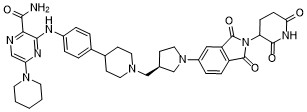
|